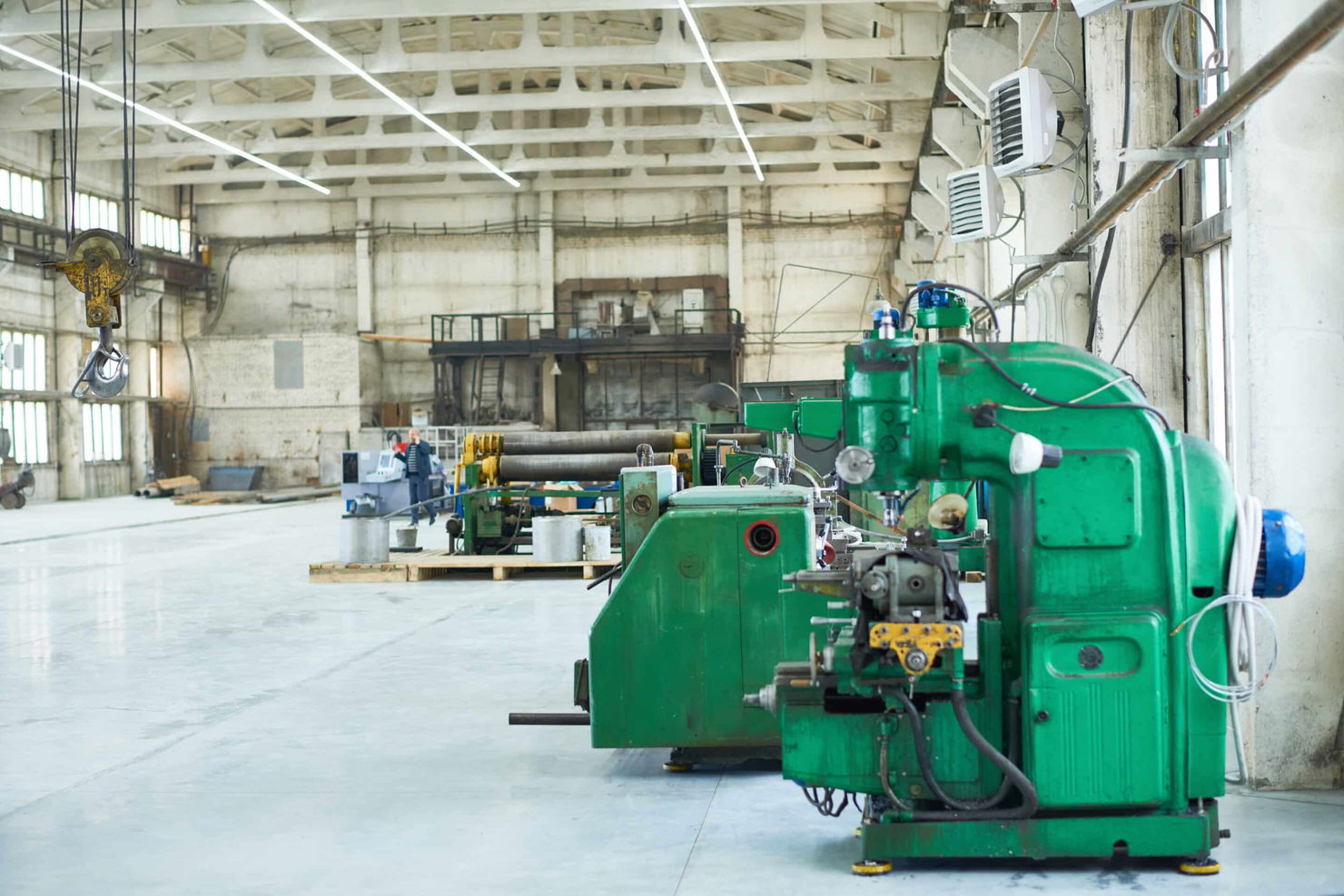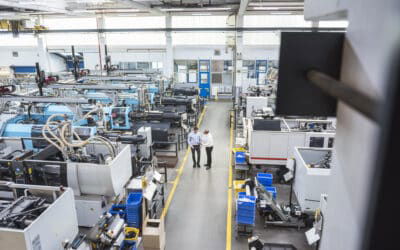Most manufacturers proudly report their OEE every week but few truly understand what this key performance indicator actually measures.
Walk into any factory and ask about their Overall Equipment Effectiveness. You’ll get a confident number: “We’re running at 78% OEE.” But ask how they calculated it, and the story changes. Excel sheets. Manual logs. Data entered hours after the shift ends. Micro-stops that never get recorded because “it was just 30 seconds.”
Here’s the uncomfortable truth: the OEE you’re reporting probably isn’t your real OEE. And that gap between reported overall equipment efficiency and reality is costing you money, capacity, and opportunities.
Understanding what this key metric actually measures not just the OEE formula, but the reality behind it — is the difference between improving manufacturing performance and chasing ghosts. Let’s break down what OEE is, why most factories measure it wrong, and what it takes to see the truth.
What is Overall Equipment Effectiveness (OEE)?
OEE stands for Overall Equipment Effectiveness. It’s the single most important performance metric in manufacturing a KPI that measures how efficiently your equipment and production processes run compared to maximum potential. The OEE meaning goes beyond simple equipment utilization it captures all the ways production falls short of perfect.
The standard OEE calculation combines three core components:
The OEE Formula
OEE = Availability × Performance × Quality
This formula for overall effectiveness reveals where productive manufacturing time is lost. Let’s break down what each performance factor actually measures:
Availability: Measuring Run Time vs. Scheduled Time
What percentage of scheduled time was the machine actually producing?
Availability captures downtime losses: breakdowns, changeovers, material shortages, and any other reason equipment sits idle when it should be running. If your production line is scheduled for 8 hours (480 minutes) but only runs for 400 minutes, your availability score is 83%.
This component reveals equipment reliability and maintenance effectiveness across your manufacturing process.
Performance: Measuring Production Speed Against Ideal Cycle Time
When running, was the machine producing at its ideal cycle time?
The performance factor measures speed losses. If your machine should produce 100 parts per hour but only produces 85, your performance rate is 85% — even if it never stopped. Slow cycles, minor jams, and running below optimal production speed all hurt this metric.
This reveals inefficiencies in how equipment and production processes actually operate versus how they should.
Quality: Measuring Product Quality and Defect Rates
Of the parts produced, how many met quality standards on the first pass?
The quality rate captures defects and rework. If you produce 1,000 parts but 50 are rejected or need rework, your OEE quality score is 95%.
This component measures the percentage of manufacturing time that produces saleable products versus scrap or rework.
A Real OEE Calculation Example
Imagine a packaging line scheduled for an 8-hour shift:
Availability calculation:
- Planned production time: 480 minutes
- Actual run time: 420 minutes (60 minutes lost to changeover and breakdowns)
- Availability: 420 ÷ 480 = 87.5%
Performance calculation:
- Ideal total production: 840 boxes (ideal cycle time: 30 seconds per box)
- Actual production: 735 boxes (running slower than ideal)
- Performance: 735 ÷ 840 = 87.5%
Quality calculation:
- Total units produced: 735 boxes
- Good boxes: 713 (22 rejected for labeling defects)
- Quality: 713 ÷ 735 = 97%
Final OEE: 87.5% × 87.5% × 97% = 74.3%
That’s what the formula says. But here’s where reality diverges from the textbook.
Why Most Factories Calculate OEE Wrong
The OEE formula is simple. The problem is the data going into it — and the gap between calculated OEE and actual equipment performance.
Error #1: Manual data capture means missing losses
Most factories rely on operators to log downtime manually. The big stops get recorded — a 45-minute breakdown is hard to miss. But what about the hidden losses:
- The 90 seconds spent clearing a jam
- The 3 minutes looking for the right tools during changeover
- The 5-minute “adjustment” that happens twice per shift
- The slow warmup after lunch that nobody mentions
These micro-stops don’t feel worth recording individually. But they add up fast. One automotive supplier discovered that unrecorded stops accounted for 18% of their shift time time they thought the line was running.
Without OEE software or automatic data capture, these losses remain invisible in your OEE metrics.
Error #2: Data comes too late to improve performance
In many plants, OEE gets calculated at shift end or even weekly. By then, the context is gone. Was that low availability score on Tuesday due to a maintenance issue, operator training, or a material problem? Nobody remembers.
Late data turns OEE into a history report, not a management tool for improving manufacturing productivity. You’re looking in the rearview mirror instead of seeing the road ahead.
Error #3: The baseline drift problem
Performance rate assumes you know what “ideal” speed means. But many factories set their baseline at what the machine currently does, not what it should do according to lean production principles.
If your line has been running at 85% of theoretical capacity for three years, that becomes the new normal. Your overall performance looks fine, even though you’re leaving 15% of capacity on the table every single day.
Error #4: What you don’t measure, you can’t improve
Quality losses only count if you catch them. If defects get discovered downstream or worse, by customers they’re not in your OEE calculation. Some factories only count scrapped parts as quality losses, ignoring rework (which consumes productive time and labor) or parts downgraded to lower-margin products.
The result: phantom equipment effectiveness
A plant showing 78% OEE manually might only hit 58% once real-time data is captured across production processes.
That 20-point gap? It’s not an accounting error. It’s lost money. Lost capacity. Lost opportunities to improve overall efficiency.
OEE Benchmarks: What’s a Good Score?
Understanding your OEE target requires context. Here’s how your score typically translates across industries:
- 100% OEE: Theoretically perfect — only good parts, at maximum production speed, with zero downtime. Never achieved in practice.
- 85%+ OEE: World-class manufacturing. This benchmark represents excellence and is the goal for most lean production operations.
- 60-85% OEE: Typical for most industries. Room for significant improvement in equipment utilization and overall effectiveness.
- 40-60% OEE: Common in facilities with older equipment or no formal productive maintenance programs. Major losses in availability, performance and quality.
- Below 40% OEE: Indicates serious inefficiencies across the manufacturing process. Immediate action required.
But here’s the critical insight: a benchmark is meaningless if you’re not measuring accurately. A false 78% that hides problems is far worse than an honest 58% that reveals where to improve.
The Hidden Side of OEE: What Equipment Effectiveness Really Reveals
Here’s what most people miss: OEE isn’t just a performance metric. It’s a diagnostic tool for your entire operation.
When measured correctly, this key performance indicator reveals what’s really happening on your shop floor not just on machines, but in processes, behaviors, and systems.
It exposes the Six Big Losses
Real OEE measurement surfaces hidden losses across your manufacturing process:
Availability Losses:
- Equipment breakdowns and failures
- Setup and changeover time between products
Performance Losses: 3. Small stops and micro-downtime (jams, sensor trips) 4. Reduced production speed below ideal cycle time
Quality Losses: 5. Production defects during normal run time 6. Startup rejects and scrap during changeovers
These losses aren’t just equipment problems. They’re system problems across production processes. And you can’t fix what you can’t see.
It measures maintenance effectiveness
Your OEE score reflects equipment reliability and whether you practice productive maintenance (or total productive maintenance). Low availability scores signal reactive maintenance strategies. Declining performance over time reveals equipment degradation.
Facilities that excel at OEE typically have strong preventive maintenance programs that maximize equipment performance before failures occur.
It reveals organizational effectiveness
Your overall equipment effectiveness shows:
- Whether operators have the training and tools they need
- If maintenance is proactive or reactive
- How quickly problems get escalated and resolved
- Whether production, quality, and maintenance actually collaborate
A factory with good equipment but poor OEE usually has a process problem, not a hardware problem.
It measures your capacity to act
The most important thing OEE measures? Your ability to close the loop between data and action.
Knowing your line was down for 30 minutes yesterday is interesting. Getting an alert 2 minutes into that stop, so you can fix it now, is valuable. That’s the difference between OEE as a report and OEE as a tool for continuous improvement.
OEE is not just a number — it’s a mirror of your shopfloor reality and overall effectiveness. The question is whether you’re looking at a clear reflection or a distorted image.
From Theory to Reality: Measuring Equipment Effectiveness with Visibility
So how do you get from calculated OEE to real equipment performance measurement?
The factories that get this right share a common approach: they prioritize visibility over perfection.
Real-time OEE metrics, not end-of-shift reports
The most advanced tech doesn’t win — the one your operators actually use does. Real OEE measurement means capturing machine states automatically and continuously:
- When equipment is running, when it’s stopped, and why
- Actual cycle times versus ideal production speed
- Quality data at the point of production
This doesn’t require tearing apart your equipment or months of IT integration. Even older machines can be monitored with simple sensors that detect production versus idle time no need to open electrical cabinets.
Modern OEE software solutions can install in as little as 2 hours per machine, immediately capturing data that manual logs miss.
The goal isn’t Big Brother surveillance. It’s removing the burden of perfect record-keeping from people who are busy making things.
Visibility where it matters most
Data only creates value when the right people see it at the right time:
- Operators need real-time feedback: “You’re running 10% slower than standard — check for issues.”
- Supervisors need shift visibility: “Line 3 has had six micro-stops in the past hour.”
- Maintenance needs trend data: “This machine’s availability is declining week over week.”
- Management needs strategic insight: “We’re losing more to performance than availability invest in process improvement, not new equipment.”
This is the difference between knowing your OEE and seeing your equipment effectiveness in real time.
Fast implementation wins
Here’s a truth that surprises many plant managers: the factories with the best OEE tracking aren’t always the ones with the biggest IT budgets.
They’re the ones that started measuring something quickly, learned from it, and improved.
Waiting six months for the perfect MES deployment means six months of flying blind on manufacturing performance. The smarter approach: get basic OEE visibility on critical machines in days, not quarters.
Quick deployment means quick learning. Quick learning means quick improvement.
You don’t need to connect everything at once. Start with your bottleneck production line. See real data. Make one improvement based on actual OEE metrics. Then expand.
The Bottom Line on Overall Equipment Effectiveness
OEE doesn’t lie but the way you measure it might.
The factories that win aren’t the ones with the highest reported OEE. They’re the ones with the most accurate view of where losses actually occur across equipment and production processes. Because you can’t improve manufacturing productivity without visibility into real performance and quality.
Real OEE measurement means:
- Automatic data capture that catches every stop, every slow cycle, every defect
- Real-time visibility that turns OEE metrics into action
- Fast deployment that creates value this week, not next quarter
The question isn’t whether to track this key performance indicator. The question is whether you’re ready to see what your real equipment utilization and overall efficiency look like.
Ready to see the truth?
Frequently Asked Questions
What is OEE and how is it calculated?
OEE (Overall Equipment Effectiveness) is a manufacturing KPI that measures equipment efficiency. It’s calculated by multiplying three factors: Availability × Performance × Quality. For example, if a machine runs 87.5% of scheduled time (Availability), produces at 87.5% of ideal speed (Performance), and makes 97% good parts (Quality), the OEE is 74.3%.
What is a good OEE score?
World-class manufacturing achieves 85% OEE or higher. Most factories operate between 60-85% OEE. Scores below 60% indicate significant room for improvement, while anything below 40% signals serious inefficiencies requiring immediate action. However, an accurate 58% is more valuable than an inflated 78% that hides real problems.
Why is my OEE lower than expected?
The most common reason is that you’re finally measuring accurately. Many factories overestimate OEE by 10-20 points because manual logs miss micro-stops, late data entry loses context, and baselines drift over time. Real-time automatic data capture typically reveals hidden losses that manual tracking never captured.
What's the difference between OEE and TRS?
OEE and TRS (Taux de Rendement Synthétique) are the same metric, just in different languages. OEE is the English term, while TRS is used in French-speaking countries. Both measure equipment effectiveness using the identical formula: Availability × Performance × Quality.





0 Comments